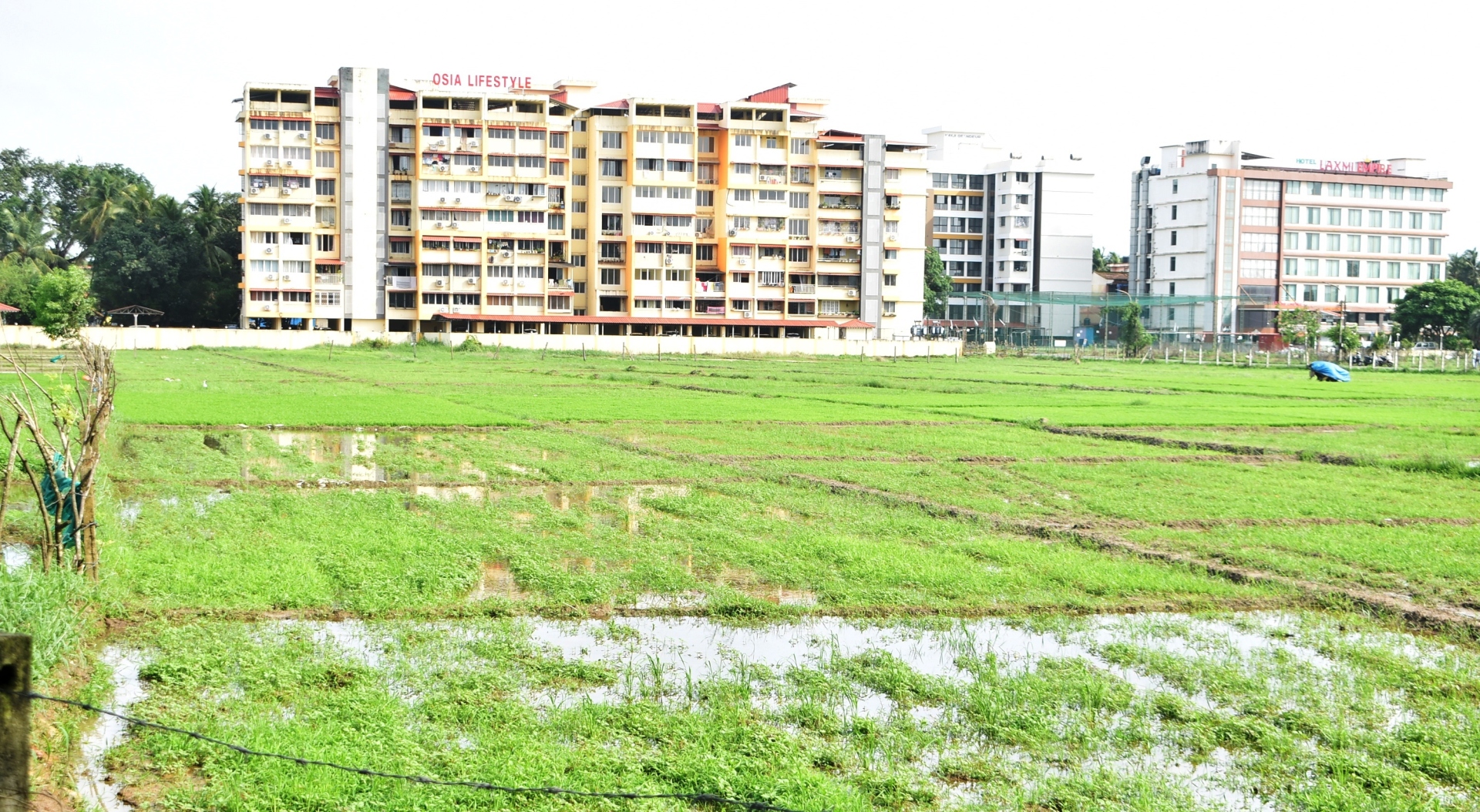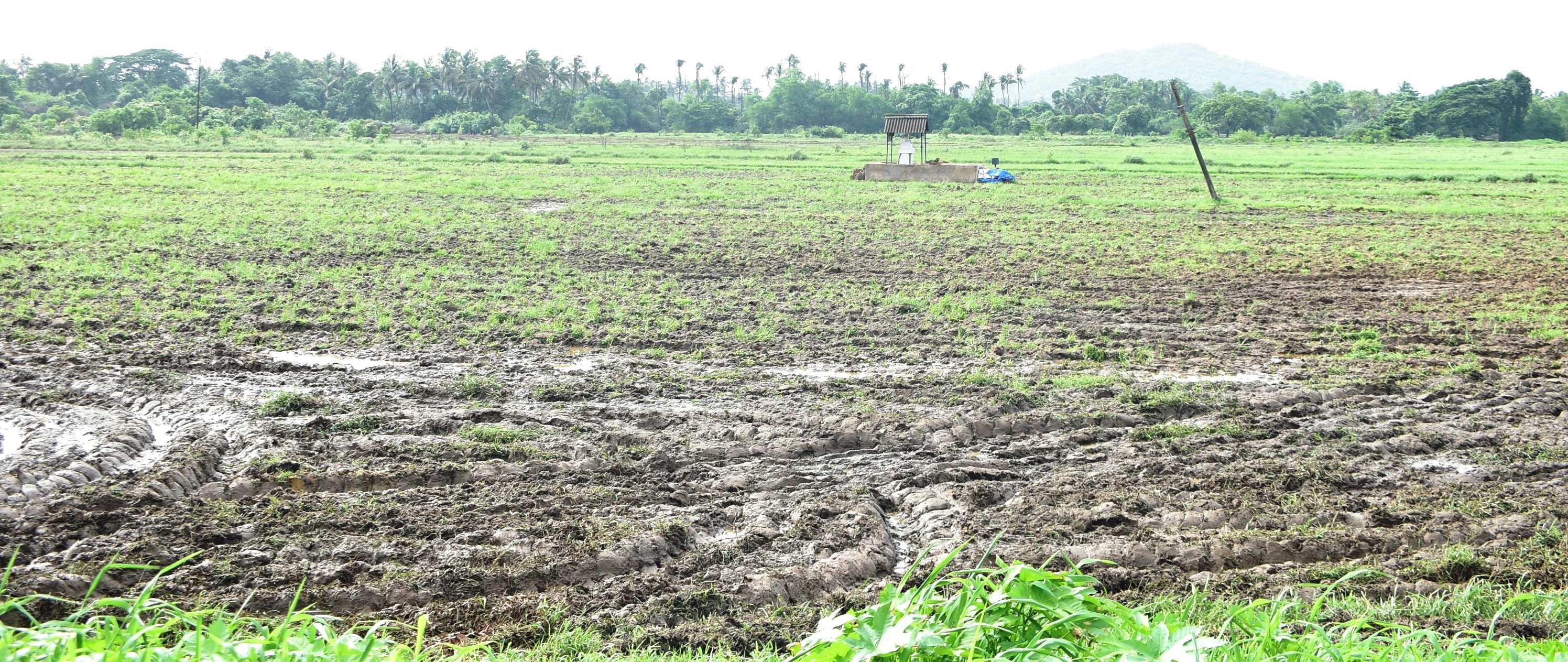With GSUDA-acquired fields marked for commercial use, cultivators plead for protection of green zones

Paddy fields near the Margao railway station as farmers prepare for a new agricultural season.
Photo Credits: Santosh Mirajkar
MARGAO
As farmers in Margao prepare for another monsoon season of cultivation, concerns are mounting over the Goa State Urban Development Agency’s (GSUDA) draft Master Plan 2041, which proposes a series of urban developments on agricultural land still actively farmed.
On Thursday morning, while a power tiller is expected to begin work in the paddy fields opposite the Margao railway station, the GSUDA-appointed consultant will simultaneously present the key features of the draft Master Plan at the Margao Municipal Hall. The plan proposes major commercial and innovation hubs in the city, triggering anxiety among local farmers who have long resisted the conversion of their land for non-agricultural purposes.
The agricultural fields, measuring 28,000 square metres, were acquired by the GSUDA over two decades ago for a transportation centre. Since then, the farmers have resisted all attempts to displace them, waging a sustained battle to scuttle all government plans to exploit the lush green fields for commercial use.
These farmers have kept cultivating the fields even after GSUDA acquired the fields of their ancestors, maintaining the area as an oasis in the midst of the city's urban sprawl.
Claudius Dias, a farmer speaking on behalf of his embattled community, raised serious concerns over the draft Master Plan 2041 and its proposed developments on actively cultivated land. He questioned whether the GSUDA-appointed consultant had conducted any ground survey of the fields before recommending a host of commercial and infrastructure activities.
“Why is the government trying to displace us from the ancestral fields we’ve cultivated for generations?” Dias asked. “Since we cultivate the fields round the year, our fields constitute the city’s lungs. Not only will the farmers be displaced, but the proposed economic activities in the green fields will choke the city’s lungs,” Dias remarked as he urged Chief Minister Pramod Sawant to intervene and reject the proposed activities on agricultural land, calling it a critical moment to protect both farmers and the city’s environment.
---
Draft plan revives fears over Madel’s agricultural fields

MARGAO: Farmers preparing their fields for the ensuing season at Madel, located opposite the South Goa District Collectorate, may soon face uncertainty over their land as it may soon be repurposed for urban development under GSUDA’s draft Margao Master Plan 2041.
GSUDA had acquired the lush green fields, measuring 1.37 lakh square metres, over 20 years ago for a song to set up the controversial truck terminus, only to scrap the project after the farmers, citizens and politicians opposed the plan.
The draft Master Plan for Margao 2041, prepared by the GSUDA-appointed consultant, now speaks of a riverfront in the agency-acquired fields. The Master Plan has called for the regeneration of the NH66, passing along the acquired fields, as a civic and commercial corridor, only throwing up questions about whether the sprawling agricultural fields at Madel figure in the proposed corridor.
Sources say the Madel fields have been shown as a Special Commercial Zone in the Margao ODP. In the past, a portion of the fields was marked for an IT hub, further fuelling apprehensions about the long-term future of these fertile fields, which remain a green expanse amid rapid urbanisation.
---
Vijai slams 'Master’s Plan', calls for people-centric alternative
MARGAO: Ahead of the public presentation scheduled at the Margao Municipal hall on Thursday, Goa Forward Party President and Fatorda MLA Vijai Sardesai has strongly criticised the draft Margao Master Plan 2041, terming it a "Master’s Plan" rather than a "People’s Plan."
His comments came after a presentation made by the Margao Municipal Council’s appointed consultant to the MLA and councillors from the Fatorda constituency on Wednesday.
“This plan is not of the people; it looks like a plan made by a master,” said Sardesai. He pointed out that large tracts of agricultural fields in Fatorda, still being cultivated by local farmers, have been proposed in the plan as ‘sponge parks’ and other urban design projects. “This is a deliberate attempt to convert fertile fields into PPP-model projects. But the farmers are resisting. Even though GSUDA acquired these lands forcefully 15 years ago, cultivation continues. The master is now eyeing these lands again,” he warned.
While Sardesai welcomed proposals for improving urban mobility through electric shuttle services and heritage conservation, he questioned the government’s financial capacity and intent. “These are good concepts, but who will fund them? Under which scheme? The consultant had no answers, and neither does the government. This is a hastily prepared plan,” he asserted.
With municipal elections on the horizon in 2026, Sardesai urged residents of Fatorda and Margao to scrutinise the draft plan carefully and make a choice between imposed development and community-driven planning. “Let’s bring a plan the people want. This is our mission,” he declared.